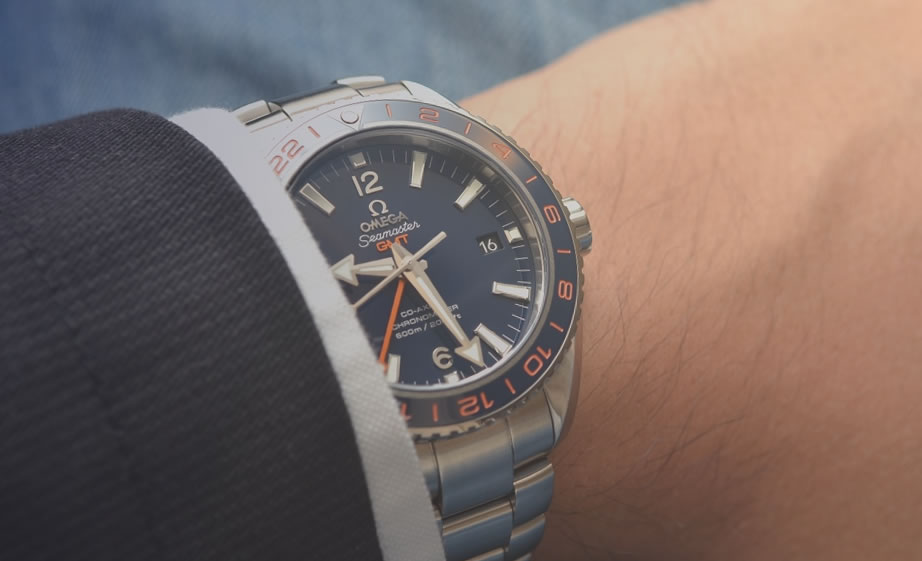Omega Seamaster 300
Omega’s anti-magnetic technology was introduced in 2013 and it set a whole new standard in the fight against magnetic field in the watch industry. The Seamaster Aqua Terra > 15000 Gauss epitomized this concept and the company announced its plan to incorporate this technology to all its watches that had co-axial escapements.

The Omega Seamaster 300 was introduced in 2014 and looking at it, you’d easily conclude that it looks just like an Omega 1957 model which had the exact numeral font, bezel design, beige wedge-shaped indexes and hand style. The case is slightly curved and you can read the words Master Co-Axial Chronometer on the dial.

By categorizing it as a chronometer, it means that it has passed the chronometer testing of the COSC, proof of its performance and precision. It has the words Co-Axial referring to its co-axial escapement. And it also is labeled Master because it’s able to overcome the challenges of the company to resist magnetic fields to an extent that has never been done before in a watch.
Magnetic fields are very common and you can encounter it in electric motors, induction stoves, headphones and loudspeakers. Even cellphones have them. Magnets attach the covers of electronic devices and gadgets like your iPad or tablet and if you get an MRI scan, you cannot wear your watch because it generates the highest magnetic fields at 15,000 gauss and some machines even have 30,000 gauss.
When there’s a strong magnetic field, it can affect the accuracy of your watch’s timekeeping. In fact, some watch repair companies say a lot of the watches that need repair are those that have been damaged by magnets.
Usually, to protect watches from magnetic fields, watch companies cover the movement with soft iron case. However, it doesn’t protect the display back or the date window and it can only protect for up to 1,000 gauss. Omega says that their new movements can deal with up to 15,000 gauss.
What they did is use materials that are anti magnetic and did away with protective cases. The balance wheel, escape wheel, pallets and balance spring use materials that resist magnetic fields. The balance spring is made of silicon, the balance wheel is made of titanium, wheels and bridges are made of brass, and so on.
Other than the lack of a date function, the Omega Seamaster 300 movement (Caliber 8400) is very much like the Caliber 8500. The design did not include a date window because the original didn’t have one. Both movements have 60-hour power reserves (2 barrels) and the balance wheel has fine adjustment screws. The finish is very nice and the movement can fill the case with its size.
The caseback has a viewing window and it rests nicely on the wrist and is comfy. The steel bracelet is flexible and will conform the contours of the wrist and doesn’t catch hairs. The clasp and the bracelet are bit sharp on the edges. It has an extension mechanism on the clasp. The clasp has 2 safety buttons and is very secure.
The bezel is unidirectional and is easily gripped for adjustments. The numerals are Liquidmetal which is better than stainless steel but there are no markings for the minutes. The dial is very readable and it has luminous indexes and hands so you can see clearly in the dark. The hands for the hours and minutes are distinctive so you won’t mistake one for the other.
The clasp is matte finished and has large surfaces but it tends to be susceptible to scratches. The dial, case and bracelet are skillfully made and the finish is superior.
You can reset the hour hand forward or backward without affecting the minutes and seconds hands. This is great when adjusting the time for DST or when you go to another timezone. Of course there is no need to keep correcting the time frequently.
When it comes to accuracy, the Omega Seamaster 300 performs very well. It lost just 1 second per 24 hours on the wrist. On the timing machine, it beat all other Omega manufacture movements and didn’t deviate at all in 4 positions for a day.
In 2 positions it only lost 1 second and the average deviation per day was -0.3s while the highest deviation among different positions is 1s.
We consider it one of the most precise watches we’ve ever checked.
The starting price for the Omega Seamaster 300 is $6,600 which makes it slightly more expensive than the Planet Ocean ($5,800). It’s also more expensive than the Aqua Terra 15000 gauss ($5,300).
But there seems to be a high cost-benefit ratio for the Omega Seamaster 300. No other watch can offer a very solid protection against magnetism and it’s very accurate, it looks very nice, the movement is well constructed and it’s also scratch resistant.
SCORES
Omega Seamaster 300
- 1. Bracelet and clasp (max 10 points) – 9
The stainless steel bracelet is very high quality and it has two safety buttons. - 2. Operation (max 5 points) – 5
It can be adjusted easily because of the good grip of the crown and bezel. - 3. Case (max 10 points) – 8
The surfaces are well finished and the bezel is scratch-resistant. - 4. Design (max 15 points) – 15
It’s a very classy and elegant watch. - 5. Legibility (max 5 points) – 4
It’s easy to read the time day and night. - 6. Wearing comfort (max 10 points) – 8
The caseback is comfortable but the clasp and strap are a bit sharp. - 7. Movement (max 20 points) – 19
It’s very commendable because of the use of anti magnetic materials and the elaborate co-axial escapement. - 8. Rate results (max 10 points) – 10
One of the most accurate timekeeping we’ve ever come across. - 9. Overall value (max 15 points) – 15
It’s more expensive than its counterparts but it offers good cost-benefit ratio.
TOTAL: 91 POINTS